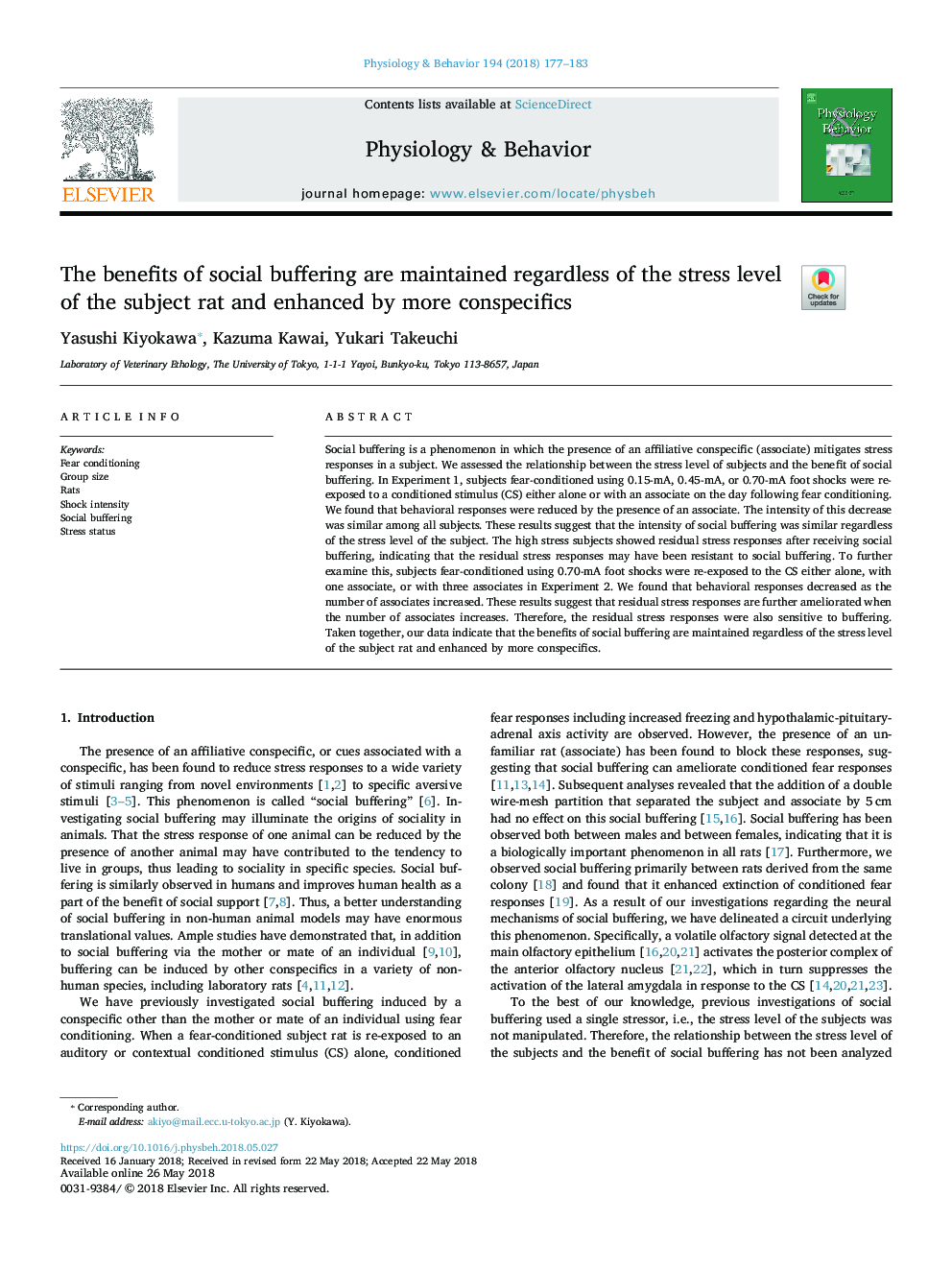| Article ID | Journal | Published Year | Pages | File Type |
|---|---|---|---|---|
| 8650258 | Physiology & Behavior | 2018 | 7 Pages |
Abstract
Social buffering is a phenomenon in which the presence of an affiliative conspecific (associate) mitigates stress responses in a subject. We assessed the relationship between the stress level of subjects and the benefit of social buffering. In Experiment 1, subjects fear-conditioned using 0.15-mA, 0.45-mA, or 0.70-mA foot shocks were re-exposed to a conditioned stimulus (CS) either alone or with an associate on the day following fear conditioning. We found that behavioral responses were reduced by the presence of an associate. The intensity of this decrease was similar among all subjects. These results suggest that the intensity of social buffering was similar regardless of the stress level of the subject. The high stress subjects showed residual stress responses after receiving social buffering, indicating that the residual stress responses may have been resistant to social buffering. To further examine this, subjects fear-conditioned using 0.70-mA foot shocks were re-exposed to the CS either alone, with one associate, or with three associates in Experiment 2. We found that behavioral responses decreased as the number of associates increased. These results suggest that residual stress responses are further ameliorated when the number of associates increases. Therefore, the residual stress responses were also sensitive to buffering. Taken together, our data indicate that the benefits of social buffering are maintained regardless of the stress level of the subject rat and enhanced by more conspecifics.
Related Topics
Life Sciences
Biochemistry, Genetics and Molecular Biology
Physiology
Authors
Yasushi Kiyokawa, Kazuma Kawai, Yukari Takeuchi,
